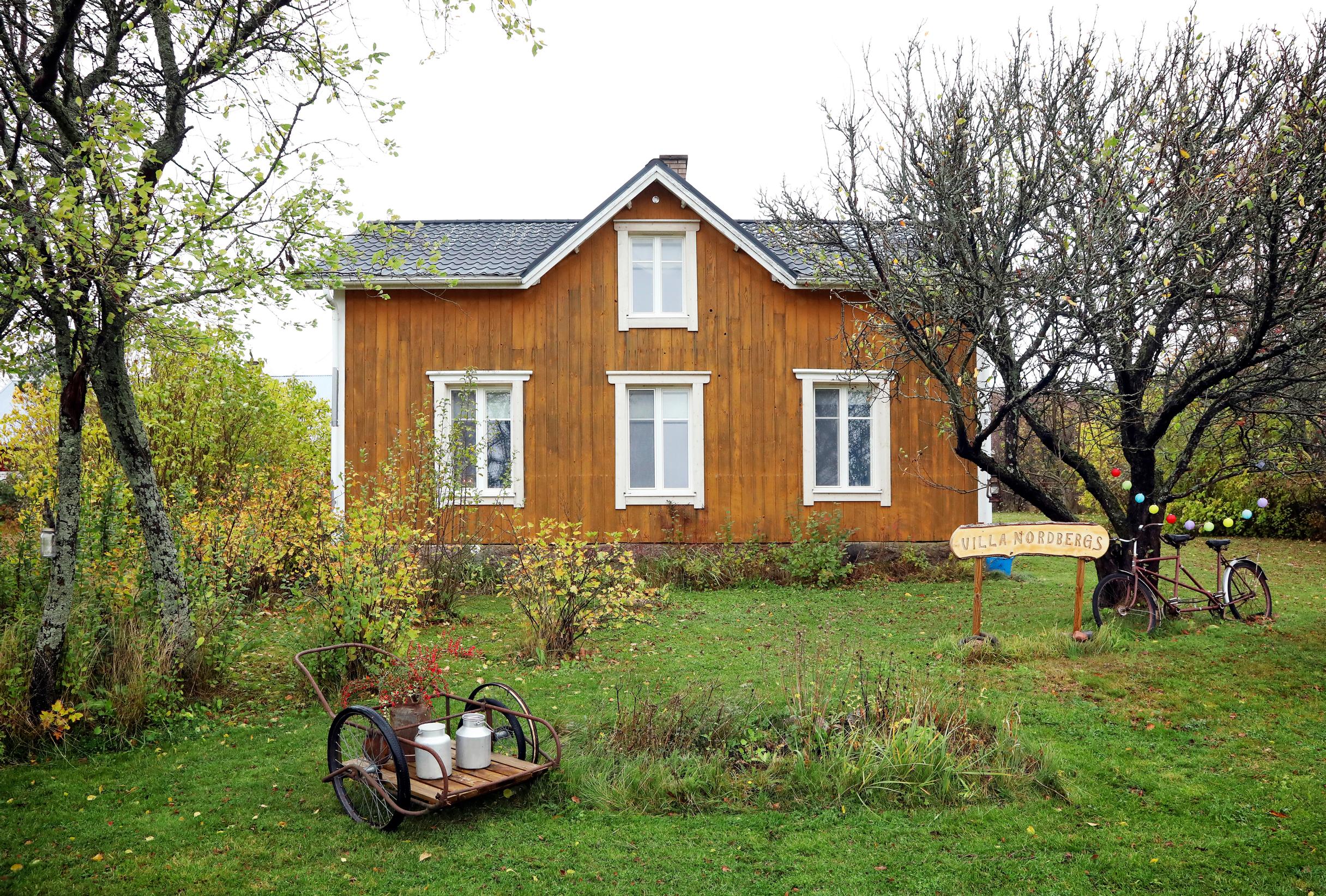
During tough times, the island house was Nina’s only refuge—“The family home’s role as my spiritual home has only grown stronger”
Nina’s family has lived in the village of Torsholma in Brändö since the 1500s. Now, Nina and her partner Kim enjoy their vacation home year-round. The ancestral home and the stormy sea whisper tales of resilient generations.
Villa Nordbergs has stood amidst a half-hectare garden in the outer Åland archipelago for over a century. In 2006, Nina Kiuru inherited the family estate. Together with her husband Kim, she carried out an extensive renovation of the log house.
“I love everything old. As history teachers, we are both interested in a house’s past as well. That’s why the island house is a dream come true for me,” Nina says.
Nina’s family has lived in the village of Torsholma in Brändö since the 1500s—or at least that’s when the church records begin. They made their living as farmers, sailors, and fishermen.
“In the outer archipelago, you had to be entirely self-sufficient, and during the seasons when neither boats nor the ice could take you anywhere, the villagers had to depend on each other,” Nina explains.


“I love rag rugs! Next summer, I plan to weave a rug from plant-dyed weft.”



“Nature is quite merciless here, and the storms can be intense at times. The sea wind at its worst is damp and cold, and in winter the archipelago is quiet.”


The house had been in the possession of a blind great-uncle until the 1990s and had fallen into a sad state. Some of the windows of the house, clad with fiber cement panels, had been covered, the floors had plastic carpets, and the bathroom wall was moldy. However, the roof had been replaced, and the log frame was in good condition. As a first step, Nina and Kim tore out the plastic carpets, allowing the old wooden floors to breathe again. They also removed the fiber cement panels, and the exterior walls received a coating of homemade yellow paint, prepared in the same way as the traditional Falu red.
Later, the couple hired a professional reconstruction specialist who insulated the house. At the same time, window openings that were revealed from inside the walls were put back into use.
“We made the upstairs a heated space and installed air-source heat pumps on both floors. Now the house is better equipped for year-round use.”
Villa Nordbergs holds significant importance for the family in many ways. When Nina suffered from severe depression for years, the island house was the only place where she could breathe.
“Now that I’m healthier, the family home’s role as my favorite place and spiritual home has only grown stronger. I love the quiet moments in the mornings here, when I’m lighting the fire in the main room hearth.”


“I love the quiet moments in the mornings, when I’m lighting the fire in the main room hearth.”



Nina makes her purchases for the vacation home at flea markets. She listens to her intuition and combines different colors and styles. Here, Nina also gets inspired to do handicrafts, and she paints, crafts, makes ceramics and prepares soaps and facial creams.
“I love rag rugs! I finally got a loom for myself, and next summer I plan to weave a few rugs from weft threads I dyed with plant-based dyes. I always have a few projects underway, like making rose jams, rowanberry mead, and juniper berry candles. We smoke a lot of fish, and in autumn I make venison stew on the wood stove.”
The Kiurus have inherited many old pieces of furniture and items from their family, and many of them have ended up here.
“I love thinking that many generations have already leaned on the railing carved by my great-grandfather, or that I bake Karelian pies and hemvete—the traditional Åland bread—in my great-grandmother’s wood-burning oven.”
Nina doesn’t shy away from modern furniture, but glossy surfaces and fiddling with small trinkets don’t belong in this house, in her opinion. Sturdy furniture and worn surfaces, on the other hand, appeal to Nina. She enjoys repurposing items, and is no stranger to using the paint brush.
“I don’t paint just anything, but if a chair already has two layers of paint, a third won’t hurt.”



“Now that I’m healthier, the family home’s role as my favorite place and spiritual home has only grown stronger.”




In Nina’s great-grandmother’s time, the garden was full of floral splendor but had over the years become overgrown. Nina has uncovered the huge terraces made by her great-grandmother, and next it’s time to plant. In addition to apple and plum trees and lilac bushes, old-time plants like soapwort, roses, poppies, and mallows have persisted in the yard. Nina has had a large vegetable garden for years.
In the summer, Nina and Kim chug from island to island in a small boat with their three dogs, but winter brings to mind the perseverance of past generations from hundreds of years ago.
“Nature is quite merciless here, and the storms can be intense at times. The sea wind at its worst is damp and cold, and in winter the archipelago is quiet. From last January to May, I was here alone with the dogs, and despite the heat pumps, we had to heat the house quite extensively. Walking to the seashore, I could almost swear I heard and saw the mothers and wives of past centuries on the shores, crying for their loved ones lost to the sea. To quote an old folk poem: ‘the moon shines brightly, the dead ride lightly, don’t you, the living, fear?’ Despite the difficult moments and challenges, the hardest thing here is leaving. Maybe once we retire, we’ll be able to stay on the island for longer periods.”



“Many generations have leaned on the railing carved by my great-grandfather.”




